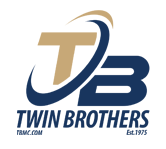- Division: Production
- Reports to: Welding Foreman
- Department: Welding
- Normal Workday: 8
- Average Hours Per Week: 40
- Weekend Word (Frequency): As needed
- Overtime (Frequency): As needed
Education
High school diploma, GED or Vocational school recommended but not limited.
Experience
One or more years company on-the-Job training working as an apprentice welder.
Specific Knowledge/Skills
- Must be a certified welder who possesses a written certification from an employer or certifying agent, such as governmental agency, and professional or technical association, verifying that worker’s production of specified welds meets prescribed standards.
- Welders are classified according to welding process or workpiece.
- Skill in several welding processes {I.e. FCAW; GTAW; GMAW), will be required to pass company administered 3G – 4G qualification test.
Essential Job Duties and Responsibilities
- Welds together metal components of products, such as pipelines, as specified by layout, blueprints, diagram, work order, welding procedures, or oral instructions, using electric arc-welding equipment: Obtains specified electrode and inserts electrode into portable holder or threads consumable electrode wire through portable welding gun.
- Connects cables from welding unit to obtain amperage, voltage, slope, and pulse, as specified by the Welding Inspector.
- Starts power supply to produce electric current.
- Strikes arc which generates heat to melt and deposit metal from electrode to workpiece and join edges of workpiece.
- Manually guides electrode or gun along weld line, maintaining length of arc and speed of movement to form specified depth of fusion and bead, as judged from color of metal, sound of weld, and size of molten puddle.
- Welds in flat, horizontal, vertical, or overhead position. Examines weld for bead size and other specification.
- May manually apply filler rod to supply weld metal.
- May clean or degrease weld joint or workpiece, using wire brush, portable grinder, or chemical bath.
- May repair broken or cracked parts and fill holes.
- May prepare broken parts for welding by grooving or scarfing surfaces.
- May chip off excess weld, slag, and spatter, using hand scraper or power chipper.
- May preheat workpiece, using hand torch or heating furnace.
- May position and clamp workpieces together or assemble them in jig or fixture.
- May tack assemblies together.
- May cut metal plates or structural shapes.
- May operate other machine shop equipment to prepare components for welding.
- Will be required to climb and/or work at heights exceeding 6 feet, and subject to frequently lifting up to but not exceeding 100Ibs.
